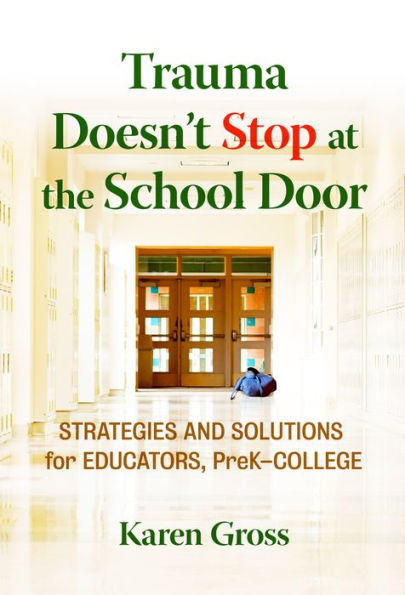This book explores how educational institutions have failed to recognize and effectively address the symptoms of trauma in students of all ages. Given the prevalence of traumatic events in our world, Gross argues that it is time for educational institutions and those who work within them to change their approaches and responses to traumatic symptoms that manifest in students in schools and colleges. These changes can alter how and what we teach, how we train teachers, how we structure our calendars and create our schedules, how we address student behavior and disciplinary issues, and how we design our physical space. Drawing on real-life examples and scenarios that will be familiar to educators, this resource provides concrete suggestions to assist institutions in becoming trauma-responsive environments, including replicable macro and micro changes.
“Ideas and strategies that teachers, parents, students, and leaders of any organization can leverage to make positive transformational changes.”
—Martha J. Kanter, U.S. under secretary of education (2009–2013)
“A treasure trove of information on trauma, as well as thoughtful recommendations for schools from pre–K through college.”
—Kathleen Ross, president emeritus, Heritage University
“It is a book for the ‘Generation T’ in the context of our time. Offers strategies of quieting the hyper-aroused stress response system.
—Ed K.S. Wang, Massachusetts General Hospital
This book explores how educational institutions have failed to recognize and effectively address the symptoms of trauma in students of all ages. Given the prevalence of traumatic events in our world, Gross argues that it is time for educational institutions and those who work within them to change their approaches and responses to traumatic symptoms that manifest in students in schools and colleges. These changes can alter how and what we teach, how we train teachers, how we structure our calendars and create our schedules, how we address student behavior and disciplinary issues, and how we design our physical space. Drawing on real-life examples and scenarios that will be familiar to educators, this resource provides concrete suggestions to assist institutions in becoming trauma-responsive environments, including replicable macro and micro changes.
“Ideas and strategies that teachers, parents, students, and leaders of any organization can leverage to make positive transformational changes.”
—Martha J. Kanter, U.S. under secretary of education (2009–2013)
“A treasure trove of information on trauma, as well as thoughtful recommendations for schools from pre–K through college.”
—Kathleen Ross, president emeritus, Heritage University
“It is a book for the ‘Generation T’ in the context of our time. Offers strategies of quieting the hyper-aroused stress response system.
—Ed K.S. Wang, Massachusetts General Hospital

Trauma Doesn't Stop at the School Door: Strategies and Solutions for Educators, PreK-College

Trauma Doesn't Stop at the School Door: Strategies and Solutions for Educators, PreK-College

Product Details
| ISBN-13: | 9780807778678 |
|---|---|
| Publisher: | Teachers College Press |
| Publication date: | 06/19/2020 |
| Sold by: | Barnes & Noble |
| Format: | eBook |
| File size: | 2 MB |
